In addition to the country reports the The State of the World's Aquatic Genetic Resources for Food and Agriculture also drew on five thematic background studies which were commissioned to address significant knowledge gaps in the following areas:
1. Incorporating genetic diversity and indicators into statistics and monitoring of farmed aquatic species and their wild relatives
2. Genome-based biotechnologies in aquaculture
3. Genetic resources for farmed seaweeds
4. Genetic resources for microorganisms of current and potential use in aquaculture
5. Genetic resources for farmed freshwater macrophytes
Thematic Background Study | Download |
Incorporating genetic diversity and indicators into statistics and monitoring of farmed aquatic species and their wild relatives
The FAO Commission on Genetic Resources for Food and Agriculture requested FAO to undertake a thematic study to explore the incorporation of genetic diversity information and related indicators into statistics and monitoring of farmed aquatic species and their wild relatives. Such information is not readily available or accessible but can be extremely useful to resource managers, policy-makers, private industry and the general public. Information on genetic diversity can also be used, inter alia, to help meet production and consumer demands, to prevent and diagnose disease, to trace fish and fish products in the production chain, to monitor impacts of alien species on native species, to differentiate cryptic species, to manage broodstock, and to design more effective conservation and species recovery programs. This study reviews the issues around the availability and use of information on genetic diversity of aquatic species. | 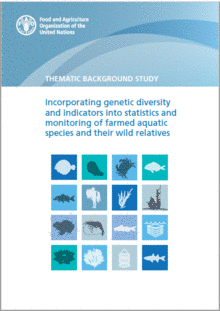
|
Genome-based biotechnologies in aquaculture
Genome technologies have been developed to study genome structure, organization, expression and function, and to select and modify genomes of interest to humans. Of these genome technologies, DNA marker technologies have been intensely used to map the genome to understand genome structure and organization. Microsatellite markers and increasingly SNP markers are currently the most important. Various genome-mapping technologies, both physical and genetic, have also been developed. Genetic mapping is based on recombination during meiosis, while physical mapping is based on fingerprints of DNA segments. This study summarizes developments in the field of genome based biotechnologies as applied to aquaculture. | 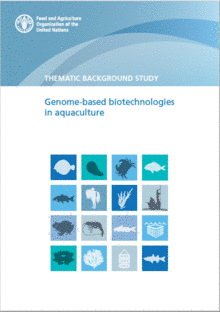
|
Genetic resources for farmed seaweeds
The genetic resources of farmed seaweeds are often omitted from regular aquaculture production reporting by countries despite their significance as a source of food and non-food products. This study provides significant data and information on the farmed red, brown and green seaweeds, with a specific focus on species and farmed types cultivated, genetic technologies applied, conservation and sustainable use, problems of farming seaweeds, drivers of seaweed farming, information sources and collaboration and cooperation in seaweed farming. | 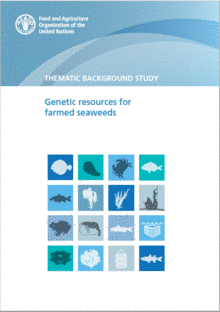
|
Genetic resources for microorganisms of current and potential use in aquaculture
The future success and growth of aquaculture depends, among other things, on continued availability and more efficient management of cultured microorganisms, including their conservation, and on diversification of genetic resources of microbes used in aquaculture. Such microorganisms fall into the microbial groups of (1) microalgae and fungal-like organisms, (2) bacteria, including cyanobacteria and (3) zooplankton. This study reviews a number of important issues including the ability to achieve long-term storage of important organisms without them being subject to genetic drift, the role of commercial and public culture collections, and the need for increased use of genomics to characterize key microbial species used in aquaculture. | 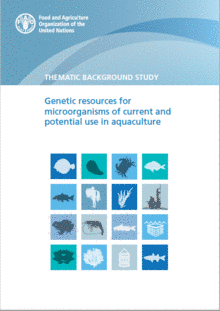
|
Genetic resources for farmed freshwater macrophytes
Freshwater aquatic macrophytes (FAMs) are generally considered to either require a continuous supply of freshwater or are present in soils which are covered by freshwater for a significant proportion of their growing cycle. FAMs are categorized into three groups based on their growth habits, namely emergent, submersed and floating species. FAMs have been cultured for as long as many terrestrial plants for a range of uses including as food and as ornamental plants. Species have been domesticated for some time and locally adapted farmed types and developed varieties are likely to exist but there is a great paucity of information on their culture. Asia is the region where most FAMs are produced and this thematic background study draws primarily on available knowledge in that region. | 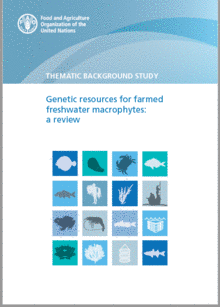
|
